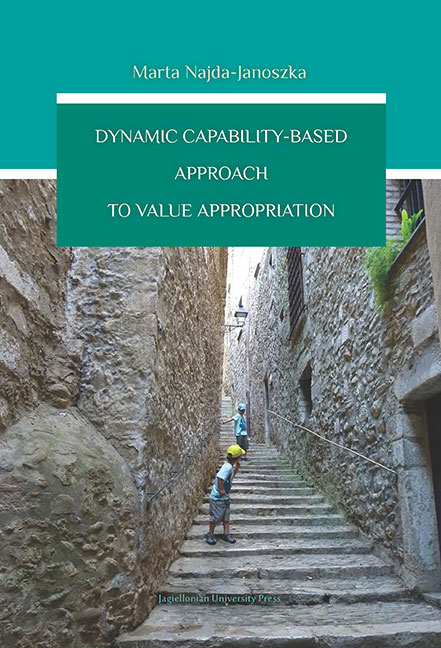Book contents
6 - Case studies
Published online by Cambridge University Press: 20 December 2017
Summary
Collected evidence was analyzed by a pattern matching technique, which involves an iterative comparison of a theoretically derived pattern described as a dynamic capability-based framework of value appropriation with an actual pattern in the empirical data. Guided by the replication logic, data analysis process consisted of two steps: within-case analysis, and cross-case analysis, which are presented in the following chapters.
WITHIN CASE ANALYSIS
Instead of extensive narratives, subsequent chapters present a theory oriented descriptions organized around key issues: profile and outline of the history of the firm; core knowledge area; characteristics of isolating mechanisms; activity clusters of dynamic capabilities; and ad hoc problem solving.
CASE A
Firm A has been on the market for 11 years (founded in 2004) and since its foundation it has specialized in the field of advanced IT based solutions for incentive marketing (motivation programs dedicated to personnel or business partners, not final customers). The company offers development (customer data analysis, mechanics of the program, budget, graphic materials, IT system, a collection of awards, training in the use of created solutions, legal and tax advice) and implementation of complex incentive programs (integration with logistics system, appointing permanent program coordinator, providing IT support, hotline, monitoring activity of the participants, collecting and archiving of data, budget control, tax services, reporting, etc.). The very beginning of that business activity was described as “just a few committed people sharing a common vision that runs the whole project.” Start-up period coincided with very favorable market conditions associated with a dynamic economic growth observed in Poland. During the first five years the company experienced a very rapid growth, in terms of the quantity and the value of realized projects. The turnover was systematically increasing around 30 to 45 percent a year. Firm was growing also in terms of its tangible and human assets. Starting with only 4 people on temporary contracts, in 2010 the average employment reached 23 people on permanent contracts. Meanwhile, Firm A moved from a rented office to its own spacious building corresponding to the growing needs of the firm in respect to conducted operations: open space for project managers and co-workers, logistics and storage area, server room, etc.
- Type
- Chapter
- Information
- Dynamic Capability-Based Approach to Value Appropriation , pp. 145 - 182Publisher: Jagiellonian University PressPrint publication year: 2016



